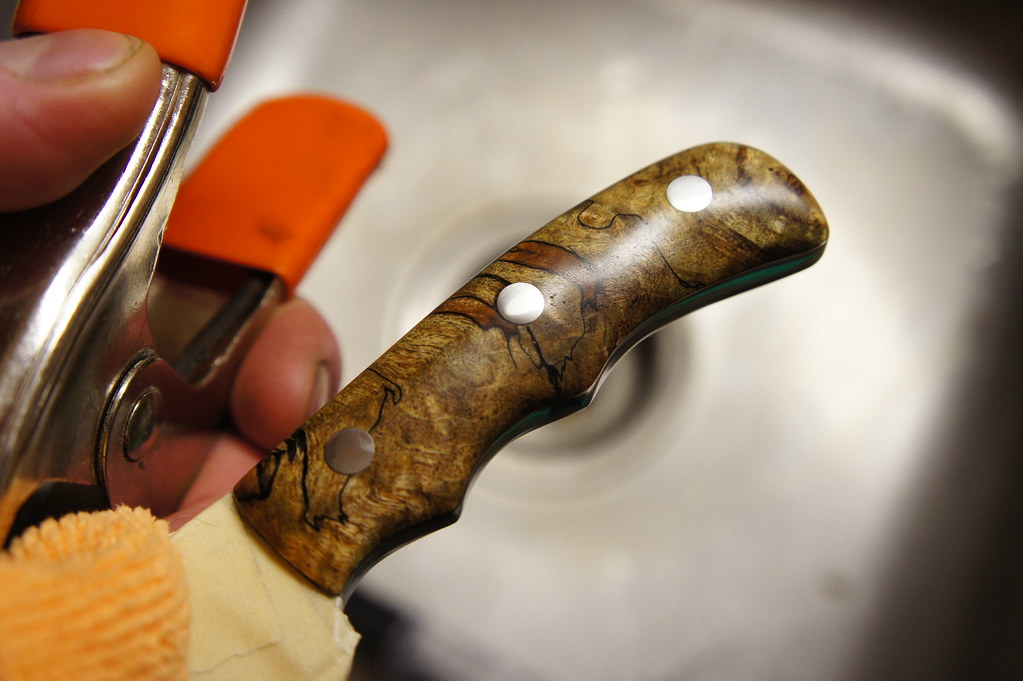I've been reading forum posts in multiple forums for hte past hour or more and am really spun in many directions. My main issue is this. When I am at 4 coats of tru oil now and the finish is nice looking and the tru oil is smooth. With this knife, I would like to get a wet look if possible...or at least the highest gloss I can achieve at this point, because I am still learning, and I want to use this as a learning experience. Once I have what is presumed to be "enough coats" I want to be able to maximize the gloss of the finish. I have heard all kinds of crazy methods.
ie.
Wet sanding,
swirl remover,
do nothing,
paste wax,
So what do I do at the point when I am done tru oiling to maximize my gloss? Paste wax? Swirl remover seems like a bad idea. I read about using this on some guitar forums but those guys end up having such a thick glaze on their wood that I don't think it would be the same. All of my tru oil seems to be in the wood, as it should be. Therefore, if I swirl removal it, I assume that solution is going to seep into the wood. ...and I assume that would be bad.
Here are some pics after the 4 coats so far. Please disregard the ugly muddiness that i couldn't get out in a lot of areas (still pi$$ed about that!). Also, I noticed that there are still some holes in the wood. I guess I sanded right past my superglue!?


ie.
Wet sanding,
swirl remover,
do nothing,
paste wax,
So what do I do at the point when I am done tru oiling to maximize my gloss? Paste wax? Swirl remover seems like a bad idea. I read about using this on some guitar forums but those guys end up having such a thick glaze on their wood that I don't think it would be the same. All of my tru oil seems to be in the wood, as it should be. Therefore, if I swirl removal it, I assume that solution is going to seep into the wood. ...and I assume that would be bad.
Here are some pics after the 4 coats so far. Please disregard the ugly muddiness that i couldn't get out in a lot of areas (still pi$$ed about that!). Also, I noticed that there are still some holes in the wood. I guess I sanded right past my superglue!?



